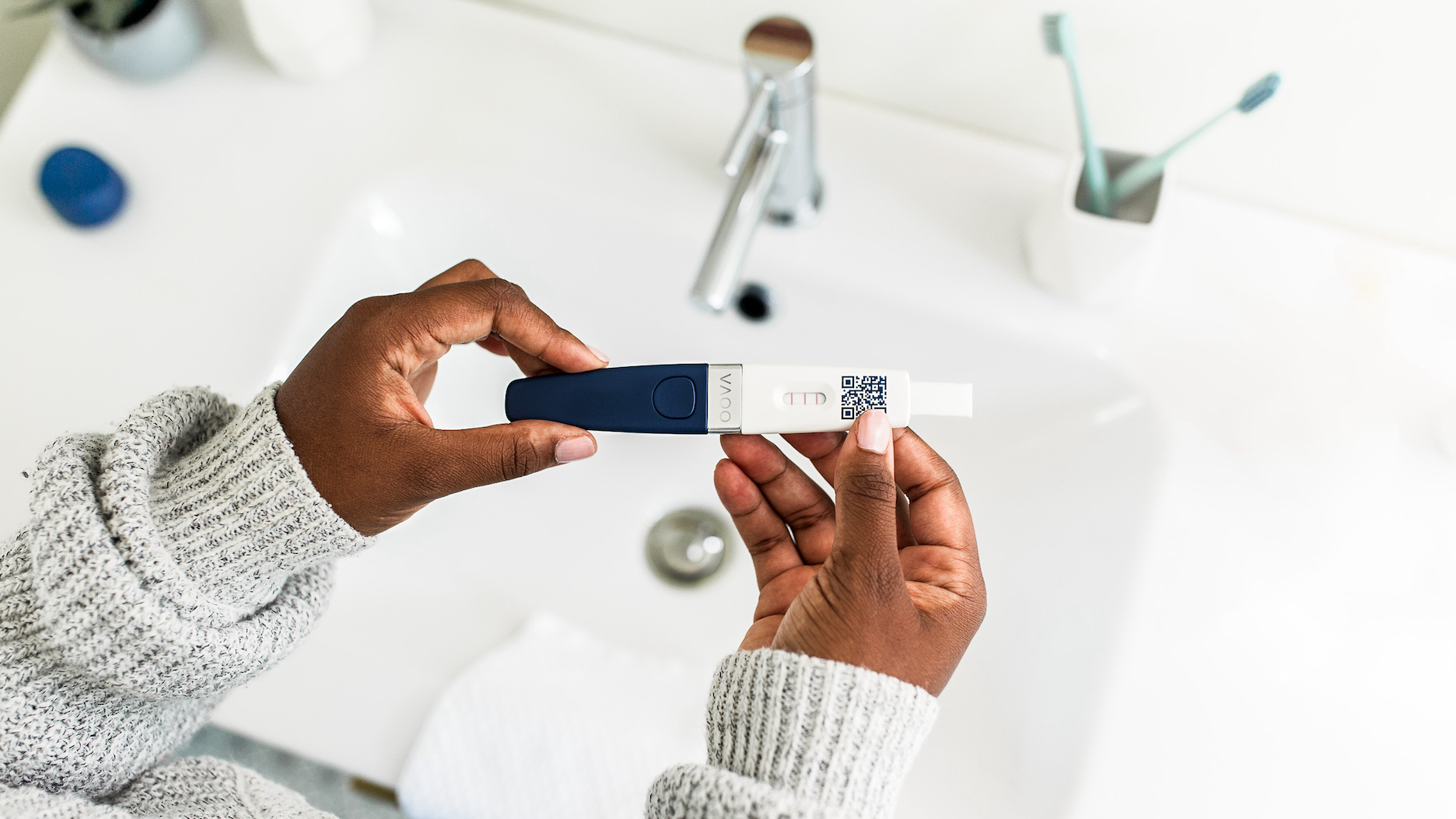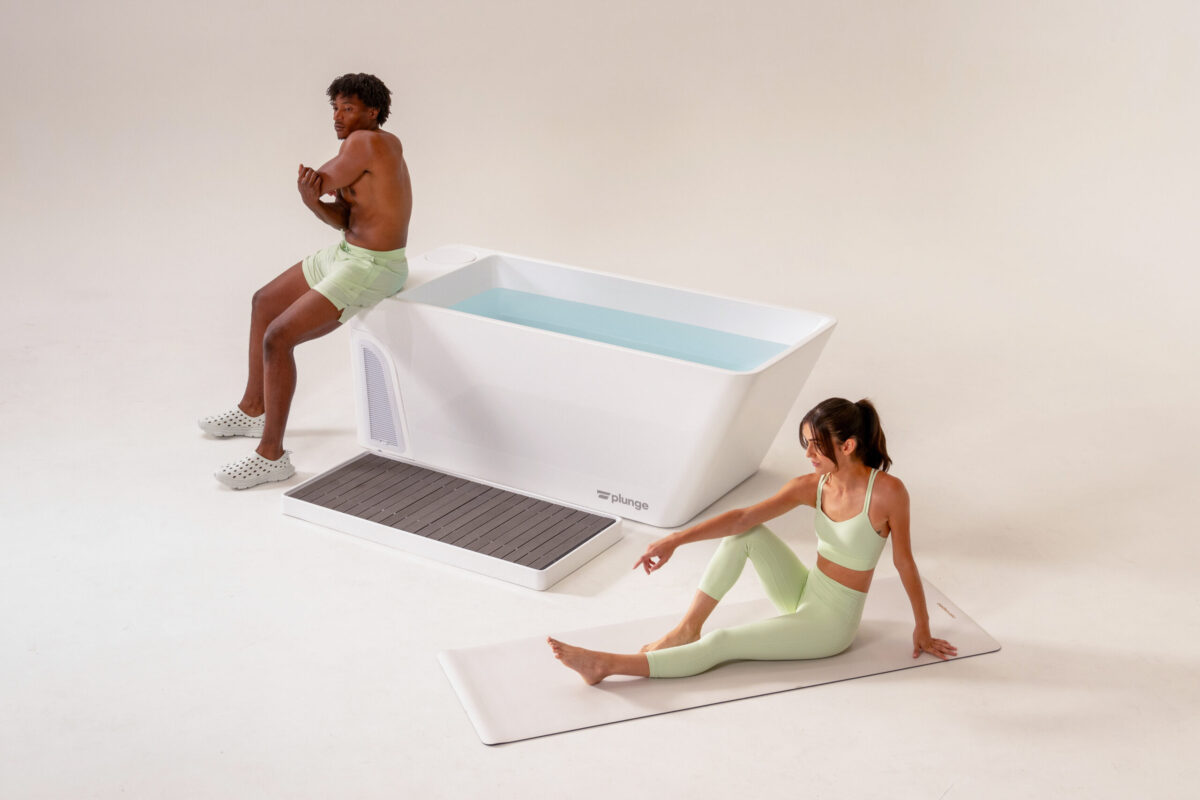Startup Spotlight is an interview series showcasing early-stage health, fitness, and wellness companies.
In this Q&A, we caught up with Amy Divaraniya, CEO of Oova — an at-home diagnostics company helping women navigate the complex world of fertility.
Having overcome her own issues related to conceiving, Amy set out to build the company she wished she had for support. So far, Oova has succeeded in creating an accurate, non-invasive, personalized, at-home test. And, with $1.2M in new funding, they’re just getting started.
Can you tell us about what you’re working on at Oova?
Oova is an at-home diagnostics company bringing clarity to the complex world of fertility.
Our first product, The Oova Kit, is so much more than the traditional ovulation tests on the market. The at-home test provides the same accuracy as a blood test by measuring luteinizing hormone and progesterone quantitatively to track, predict, and confirm ovulation.
Oova is paired with a smartphone app where users can see all of their data in comprehensible terms, along with personalized daily action plans on how to reach their goals.
How did you come up with the idea? What key insight led you to pursue this opportunity?
I started Oova because I went through a difficult time trying to conceive my son. I expected that I would not get pregnant in the first few attempts but never expected my journey to be as heartbreaking and devastating as it was.
Despite having irregular cycles, my husband and I wanted to avoid going through invasive treatments because we knew we couldn’t handle the loss of a failed cycle. That being said, I did everything I was supposed to do. I used ovulation sticks, took my body temperature each morning, and tracked everything. And yet, my pregnancy tests were negative each month.
The apps I was using never seemed to understand me. I came to realize that all of these “smart” tools were designed for women who had perfect cycles — and that wasn’t me. I didn’t fit that mold.
I began to learn that having irregular periods affected a majority of the female population. This made me realize that women didn’t have the tools they needed to understand their cycle. The technology existed… it just wasn’t being applied to women’s health.
This is when I decided to create Oova — an experience that starts with data and ends with a woman being empowered with information about her fertility.
How did you turn your idea into a company?
I began working on Oova because I felt I could make a difference in this space. Infertility was an issue I struggled with, and I experienced how lonely, debilitating, and devastating it could be.
I wanted to make a difference in the lives of women by providing them with more information. Data is powerful — it gives you strength and stability to stand behind your symptoms. I wish I had a platform like Oova when I was trying to conceive, and that’s why I wanted to create it for others on a similar journey.
I knew the product had to be accurate, non-invasive, done at home, and completely personalized, and my team delivered on that.
In August 2017, we set out to build the first and only at-home test that quantitatively measures two hormones, informing a woman of her fertile days and confirming ovulation. The platform is completely personalized so all of the insights stem from her baseline hormone levels and detect fluctuations in daily levels. Ultimately, we’ve designed the perfect tool for the irregular woman.
How big can this get? What’s the addressable market and how do you go about capturing it?
Women are getting pregnant later in life as they focus on their careers and achieving higher education. The average age at which women have their first child has advanced from 21.4 years old in 1970 to 26.9 in 2018, and this is still rising.
Unfortunately, as a woman gets older, it becomes increasingly difficult for her to conceive. For a woman trying to conceive naturally, the only option available to her was to purchase cheap, inaccurate test strips designed for a woman with a perfect 28–32 cycle.
If a woman has irregular cycles or irregular hormone levels, these tests will not work for her. In addition, these tests do not provide the critical piece of information required to truly understand her fertility: her hormone levels and behavior. The only way to obtain that level of data was to go into the clinic for invasive, costly, and inconvenient blood tests.
However, Oova is truly redefining the space of at-home testing and telemedicine. And while we’ve started with fertility, our technology is not limited to this sector. We have built a platform that can easily scale to other areas of health. Our vision is to redesign the at-home testing experience in additional areas of women’s health, men’s health, infant health, and even chronic disease.
Who is the core customer? How are you acquiring customers? And how will you grow the customer base?
Our core customers are women ages 25–44 looking to conceive. These are women who prefer to avoid undergoing invasive treatments and haven’t had much luck using at-home testing options.
As for our customer base, we have a 60+% retention rate each month for our subscription users and tripled our staff during the pandemic. We had to do a sales channel pivot due to the pandemic and developed a B2B2C stream, where clinicians from over 75 clinics use Oova’s data to monitor their patient’s hormone levels remotely.
Until recently, our customers were predominantly coming through these clinical partners. Now, as of July 2021, we’ve launched our direct-to-consumer stream and will be expanding our customer base by adding additional biomarkers to our testing platform, addressing other areas of health including menopause, tracking pregnancy, and postpartum care.
Looking at your road map, what are some of the milestones you’re targeting over the next 3–6 months?
The vision for the brand in 2021 is to focus on fertility and women’s health. We want to push forward the message that women should be in control of their own health and not be at the mercy of their doctors telling them what they should or should not do.
Women are smart: Give them the right information, and they can figure out what’s best for them. In five years from now, Oova’s brand will be expanding to address additional areas of health, not limited to fertility.
Anything else you’d like to share with readers?
Aside from the fact that Oova is designed for all women, regardless of any reproductive disorders or cycle irregularities, it has become increasingly important for Oova to be available due to COVID.
Women do not want to go to a lab to get blood draws done, and clinicians don’t want to have extra patients in the waiting room for routine blood work. Oova solves all of this by providing clinical-level accuracy completely remotely, removing the need for sample management and collection, as well as reducing social contact.
If you’re interested in having your company featured in our Startup Spotlight series, send an email to team@fitt.co.



